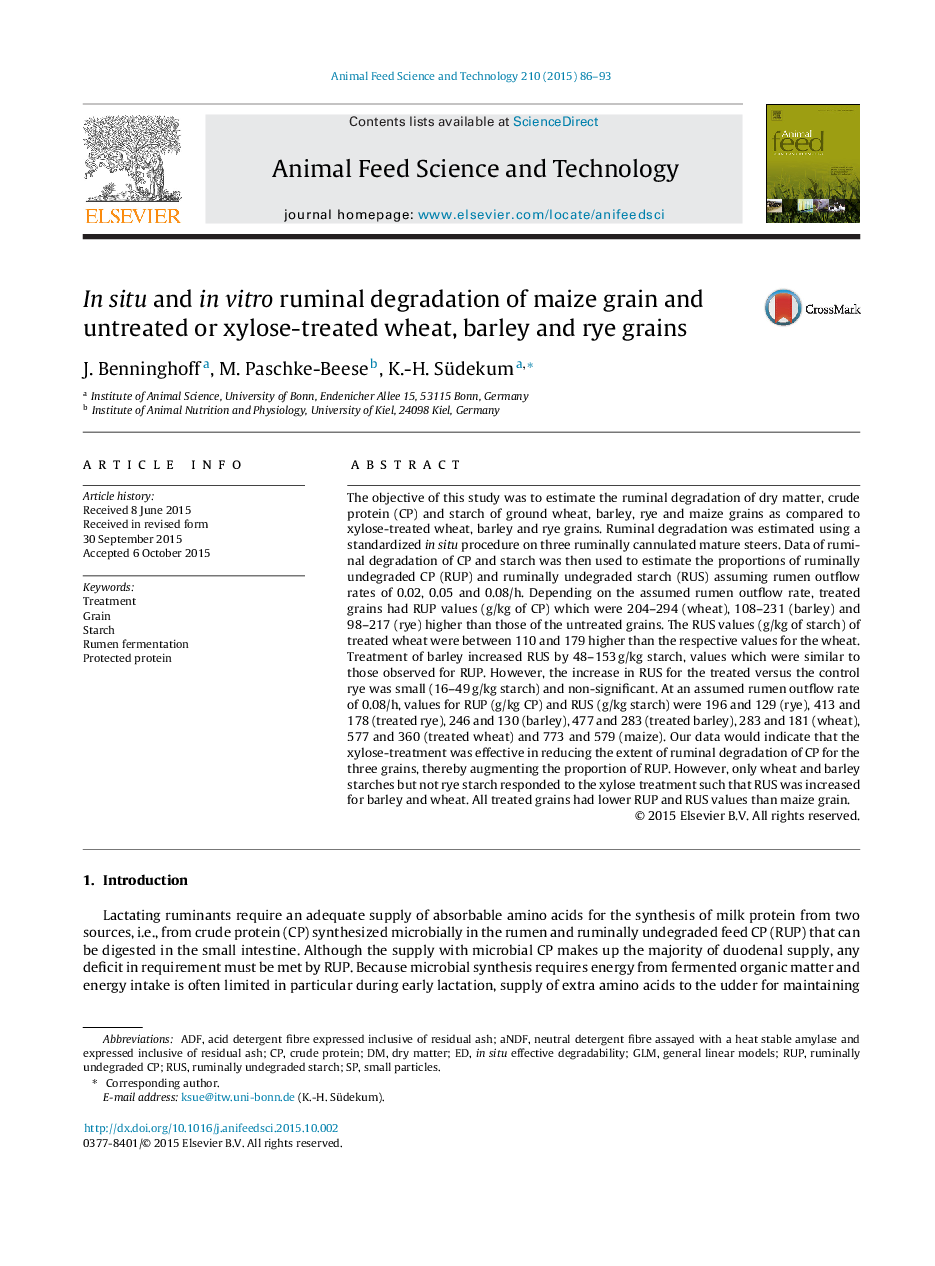| کد مقاله | کد نشریه | سال انتشار | مقاله انگلیسی | نسخه تمام متن |
|---|---|---|---|---|
| 2419318 | 1552375 | 2015 | 8 صفحه PDF | دانلود رایگان |
• Xylose treatment lowers ruminal degradation of starch and crude protein of grain.
• Xylose treatment yields more ruminally undegraded starch and crude protein.
• Xylose treatment may enhance glucose and amino acid supply to dairy cows.
The objective of this study was to estimate the ruminal degradation of dry matter, crude protein (CP) and starch of ground wheat, barley, rye and maize grains as compared to xylose-treated wheat, barley and rye grains. Ruminal degradation was estimated using a standardized in situ procedure on three ruminally cannulated mature steers. Data of ruminal degradation of CP and starch was then used to estimate the proportions of ruminally undegraded CP (RUP) and ruminally undegraded starch (RUS) assuming rumen outflow rates of 0.02, 0.05 and 0.08/h. Depending on the assumed rumen outflow rate, treated grains had RUP values (g/kg of CP) which were 204–294 (wheat), 108–231 (barley) and 98–217 (rye) higher than those of the untreated grains. The RUS values (g/kg of starch) of treated wheat were between 110 and 179 higher than the respective values for the wheat. Treatment of barley increased RUS by 48–153 g/kg starch, values which were similar to those observed for RUP. However, the increase in RUS for the treated versus the control rye was small (16–49 g/kg starch) and non-significant. At an assumed rumen outflow rate of 0.08/h, values for RUP (g/kg CP) and RUS (g/kg starch) were 196 and 129 (rye), 413 and 178 (treated rye), 246 and 130 (barley), 477 and 283 (treated barley), 283 and 181 (wheat), 577 and 360 (treated wheat) and 773 and 579 (maize). Our data would indicate that the xylose-treatment was effective in reducing the extent of ruminal degradation of CP for the three grains, thereby augmenting the proportion of RUP. However, only wheat and barley starches but not rye starch responded to the xylose treatment such that RUS was increased for barley and wheat. All treated grains had lower RUP and RUS values than maize grain.
Journal: Animal Feed Science and Technology - Volume 210, December 2015, Pages 86–93
